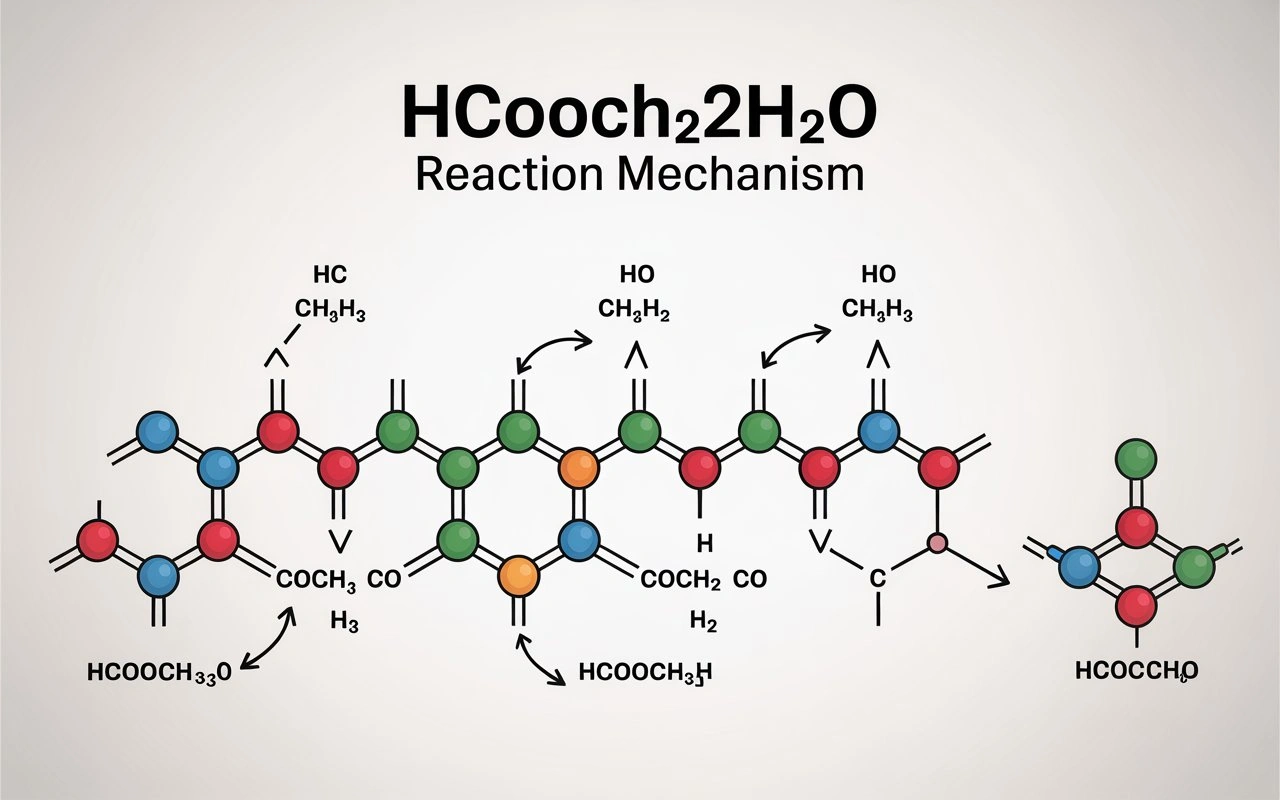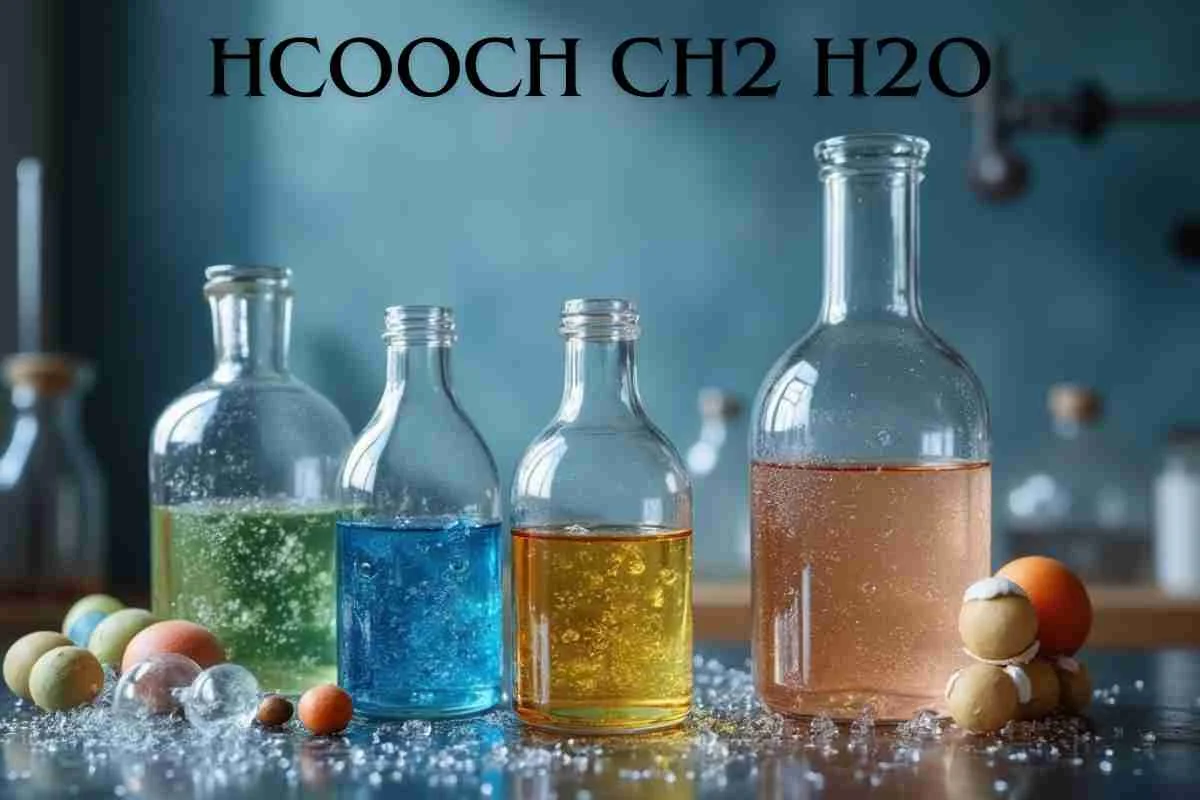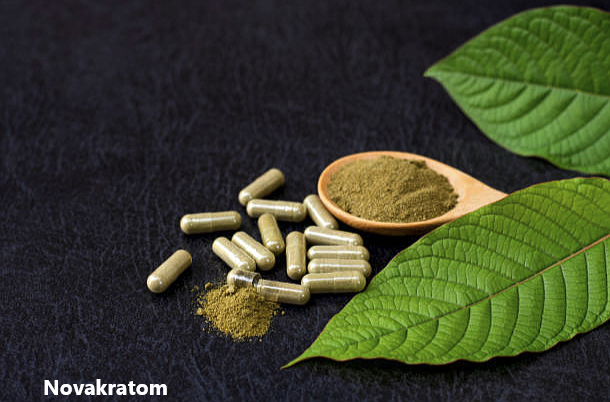Introduction
hcooch ch2 h2o is a notation often used in theoretical organic chemistry to represent a system in which formic acid (HCOOH) reacts in the presence of a methylene (CH₂) unit with water (H₂O). Before diving into the chemistry, it’s worth noting that this specific notation and study context—“hcooch ch2 h2o”—is commonly employed in academic literature and reaction mechanism databases, though no single company or individual “owns” the notation. Instead, it’s a shared tool among researchers in organic synthesis and reaction mechanisms.
What Happens When hcooch ch2 h2o Reacts?
When hcooch ch2 h2o interacts, formic acid acts as a proton donor, initiating acid-catalyzed processes. The methylene fragment (CH₂) can behave as an electrophile, carbene, or radical. In water, hydrogen bonding stabilizes intermediates. Possible outcomes include C–C bond formation, esterification, or formaldehyde generation. The reaction pathway depends on pH, temperature, and catalytic conditions. Hcooch ch2 h2o Hydration and protonation steps leading to addition or insertion products. Formation of formate esters or formylation of methylene-containing substrates. Under catalytic conditions, sequential decarboxylation or hydride transfer, often generating CO₂, methanol or substituted methylene derivatives. So overall, the reaction may yield hydrated intermediates, CO₂, and formylated products, in many cases dependent on catalysts or reaction environment.
Why hcooch ch2 h2o Matter in Organic Synthesis
This system is valuable for several reasons:
Green chemistry potentia
Using formic acid as a mild, renewable reagent in water as a solvent offers several advantages. It creates a safer and more eco-friendly reaction environment. Water acts as a green solvent, reducing harmful emissions. This combination supports sustainable and efficient chemical processes. It also helps minimize hazardous chemicals and waste production.
Controlled C C or C H bond formation
Mechanistic versatility
Synthetic utility
Exploring hcooch ch2 h2o Structures, Bonds, and Reactions
Let’s break down the participants:
HCOOCH
H₂O
Formate (HCOO⁻)
Methylene (CH₂ radical or carbocation)
Hydrogen bonding interactions
between formic acid/formate and water, influencing reaction rates and equilibrium.
Reaction pathways involve:
Proton transfers between formic acid, methylene species, and water.
Nucleophilic or radical attack of CH₂ on formate or vice versa.
Elimination or decarboxylation to release CO₂.
Hydride transfer, shifting a hydrogen from formic acid to methylene.
hcooch ch2 h2o Reaction Explained Mechanism and Products
Typical Mechanistic Routes
Proton‑transfer initiation
Hydride or radical transfer
Decarboxylation
Formic Acid and Methylene in Water hcooch ch2 h2o Explained
At its core, hcooch ch2 h2o illustrates an aqueous reaction environment where:
Formic acid (HCOOH)
Methylene (CH₂)
Water (H₂O)
plays multiple roles: solvent, proton shuttle, nucleophile, and medium for hydrogen bonding stabilization.
In practice, you might set up an aqueous formic acid solution, introduce CH₂-containing substrate or precursor, and control temperature and pH to drive:
Formylation of the methylene substrate.
Controlled reduction or radical coupling.
Clean decarboxylation of formate to CO₂ with hydride transfer to CH₂.
Conclusion
The hcooch ch2 h2o system represents an elegant example of green and versatile organic reaction chemistry. Starting with formic acid, a methylene source, and water, you can achieve proton and hydride transfers, radical or ionic additions, decarboxylation, and useful synthetic transformations. There is no single “owner” of this concept—it’s a broadly shared tool in academic and industrial research for designing sustainable pathways in organic synthesis.By understanding what happens when hcooch ch2 h2o reacts, why it matters in synthesis, how the structures and bonds interact, and the step-by-step mechanism leading to specific products, chemists can harness this system for innovative and efficient reactions.





